Selling a house is hard enough, and it can get exceedingly hard to sell if the house requires major repairs. Possible structural problems, a dated plumbing system, or faulty wiring may make it difficult for some potential buyers to take an interest in them. This makes it hard for the sellers to get a fair offer. Therefore, one has to know the condition of the house, the state of the market, and the demographics of the portraits. Fix it or not, a good strategy will get you the most traction with respect to your home’s value and speed up the selling process. At Cash for Vegas Houses, we buy houses in any condition, no matter how dispersed it may seem, offering quick and hassle-free sales-even for properties that need major repairs.
This blog will help readers understand the importance of putting evaluations and hiring professionals for inspections into perspective when dealing with a house that is not in prime position to be sold.
Major Repairs vs. Quick Fixes
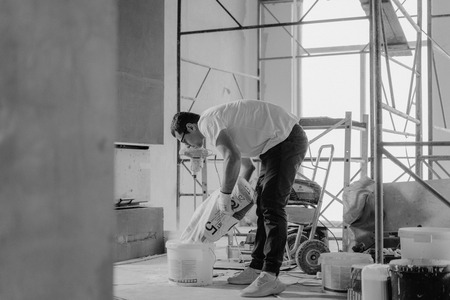
When selling a home that needs work, it is critical to distinguish between major repairs and quick fixes. Quick repairs typically include cosmetic changes that make a property more attractive but do little to correct underlying problems. Major repairs, however, will impact the safety and functionality of the home, thus necessitating the need to repair or somehow caution potential buyers about their existence.
What are Major Repairs?
Any change to the structure of a home or those critical to maintaining essential systems for human safety is classified as major. Some examples are:
Foundation: Cracks in the foundation, uneven settling, and sinking of the foundation all raise concerns about stability.
Roof: Severe roof leaks, missing shingles, or structural problems with the roof are ubiquitous signs that roofing needs to be replaced.
Old Electrical Systems: Dangerous wiring, outdated panels, and/or unsafe electrical setups are likely to contribute to fire hazards.
Major Plumbing Repairs: Major leaks, old pipes needing repair, or sewer line problems.
HVAC: A broken heating and cooling system that may compromise comfort and efficiency.
Steps to take before selling a house, especially one that is no stranger to repair, should be taken early enough for a just cause. This ensures that the method runs smoothly without losing sight of the maximization of the marketability of the property. Hence follows a small checklist of what not to forget:Important act:
Inspection: Investigate the entire house for any major repairs to address .a. You might want to hire a professional inspector to find hidden problems, like plumbing, electrical or structural problems.
Make Necessary Repair: Some household repairs are done to allure buyers to offers. Although listing “as-is” is quite an option, certain repairs may be required, such-as fixing leaks, resolving mold, or replacing windows. It will help to put in cost-efficient repairs that have a good return on the value of your property.
Declutter and Clean: Since a clean, uncluttered and organized house is much welcoming to potential buyers for viewing, personal items should be deselected, closets and storage spaces arranged, and a deep cleaning performed. Engage professional assistance as necessary.
Curb Appeal: First impressions always count. Such simple repairs as landscaping, front door painting, or exterior fix-up will do a whole lot for your house’surge to capture buyers.
Stage the Home: Staging helps buyers to understand how they would live in the house . Arrange furniture to maximize space, use neutral decor, and create inviting areas to entice buyers.
What Are the Most Important Repairs Needed Before Selling?
The most crucial repairs to take care of before selling a home deal with the property’s structure, safety, and functionality. Start off repairing the bigger problems, like a leaking roof, faulty foundation, or malfunctioning electrical and plumbing systems. Buyers will definitely pay extra attention and worry about the big-ticket repairs since they significantly affect the house’s price and might even lead to the home failing a number of inspections. Repair safety hazards like broken windows, mold, or outdated wiring to ensure a livable house up to code. On the cosmetic side, fix it any way you could; a coat of paint, patching the walls, and replacing the old carpeting, anything increases the home appeal and lures in buyers. While you never have to redo the entire place, chipping away at these repairs will attract more buyers who may offer you a better deal than you expected.
What Are the Most Important Repairs Needed Before Selling?
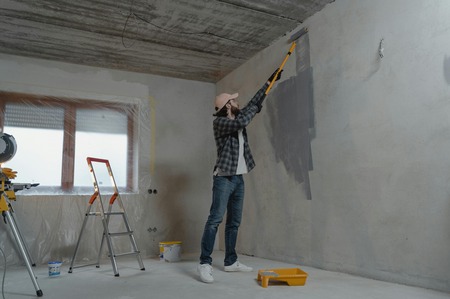
When preparing to sell a home, addressing the following major issues is crucial to ensure a smooth sale and avoid deterring potential buyers:
- Roof Damages:The culprit for leaks, many roof problems mark a potentially troublesome home structurally-and mold growth leaves buyers with a bad taste. Repairing or replacing the roof takes out an important issue affecting the building-hence there are no excuses if you want to keep up with the roof.
- Hot Water Heater Damage: A broken hot water heater is a major inconvenience for buyers, and if it’s leaking, water damage could occur. Preparation includes replacement or repair of the water heater to ensure the impeccable functioning of this basic utility.
- Electrical Issues: Outdated or faulty wiring represents a safety hazard and a common cause for lost home inspections. Renovations of electrical wiring must conform to contemporary standards of safety lest another dampened risk of fire occurs.
- Sewer and Septic Issues: Issues related to sewer lines or septic systems may trigger odor, backups, and expensive repairs for the buyers. Making repairs to the pipe system and constructing it to the point of soundness would save the seller a permanent headache for him legally or financially.
- Plumbing: Leaky pipes, low water pressure, or old plumbing might bring water damage, mould, and costly repairs. Fixing plumbing issues can avoid headaches, making the house more salable.
- House Foundation: Cracks in the foundation or uneven floors can suggest structural problems that scare off buyers. Solving foundation problems would add to the long-term stability and marketability of the building.
Common Minor Repairs Before Selling
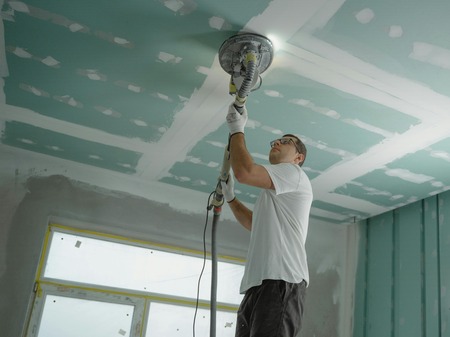
Fixing simple repairs before selling will help increase the appeal of a house to a potential buyer and sell more quickly. Below are some common minor repairs that can yield a big difference:
- Painting Walls: A fresh coat of neutral paint will help make the rooms look clean, modern, and inviting with an added effect of hiding scuffs, scratches, and minor imperfections.
- Fixing Leaky Faucets: Many a time, people think that this dripping faucet is a mere annoyance, but to the buyers, the small issue will give an impression of the property not being well cared for. Fixing or replacing leaky faucets is one minor repair that is quick and very cost-effective.
- Patching Wall Cracks or Holes: It is common to find cracks or holes in walls, but those can be VERY unappealing to a buyer. Patching those will give it a more polished look.
- Replacing Damaged Flooring: Fix hinge cracked tiles, torn carpets, or even ridged hardwood. It does not even take expensive repairs with getting floor-improvement work done that can impart an enhanced appearance of splendor and upkeep.
- Updating Light Fixtures: The swapping of broken down or outdated lighting fixtures for new and energy-efficient fixtures will create a brightness that will allow a modern feel to rooms and homes in general.
Paying for home repairs before selling can be challenging, especially if major repairs are needed. However, there are several options available to help cover the costs and ensure your home is market-ready:
- Use Home Equity: If you have quite some home equity, taking out a home equity loan or a home equity line of credit (HELOC) can complete the financing. Usually, this kind of loan would charge a considerably lower interest rate compared to personal loans, and the debt can always be cleared post-home sale.
- Personal Loan: This is an option for those who have no sufficient savings. It involves borrowing a personal loan from a financial institution and is not consisted of particular collateral, like home equity loans. But personal loans usually tend to be offered at higher interest rates.
- Credit Cards: Small repairs can be financed with a credit card, a rapid-fire means of covering costs. Some cards have appeal among buyers and provide terms applying deferred payment with an introductory rate of 0% for a specified period of time while doing with due time payment, which shows an advantage for stocks during the sale of homes.
- Renovation Loan: There are a family of repair loans originated at various lending institutions: FHA 203(k) loans and Fannie Mae’s HomeStyle loan, specifically for the repair of structures. These loans allow you to finance repairs up to the fair market value of your home as determined by a lead lender, which may include repairs to the core structure.
- Cash-Out Refinance: This process enables you to substitute your original mortgage loan with another. Refinance for a larger amount than what was owed through the cash-out refinance qualifies you for a mortgage loan of a much higher amount; this option would be used specifically to finance those repairs, but on the downside, there’s going to be closing costs for refinancing, plus, your loan amount increases.
Who Will Buy a House in Need of Major Repairs?
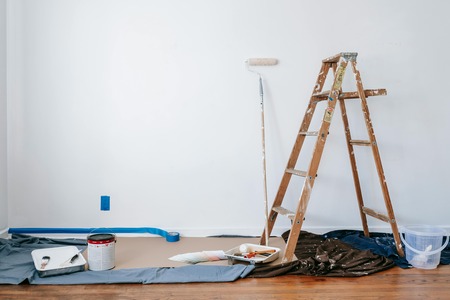
Real Estate Investors: Real estate investors are generally interested in finding distressed properties to buy at a discount, fix up, and resell at a profit. These buyers are typically very experienced with homes requiring substantial repairs and, therefore, able to make cash offers. This makes their assent more of an assured sale as they will either renovate the property themselves or hire a team to do it for them. These types of home-buyers focus on the investment’s return and usually have a team on standby to carry out the renovation professionally.
Bargain Hunters: Some buyers want a “good deal” on a house and are willing to fix the place up for a much lower price. These are the less experienced buyers who prefer to buy in a better area and/or with a larger house than they normally would (that is, with a larger house that requires work).
Remodelers or DIY Enthusiasts: remodelers and DIY buyers love the process of breathing life back into a home and are frequently on the lookout for fixer-uppers to take on as a personal challenge. They might want to put the weight of the house on to add equity through the construction project. Typically these buyers are ready to invest the time and energy it takes to get repairs done, and they are usually planning to live in the house for quite some time.
Pricing to Sell When Selling a House that Needs Repairs
Get a Comparative Market Analysis (CMA): Partner with a real estate agent to perform a CMA, comparing the specifics of your property with other recently sold properties in the area. This will give you a reality-check baseline to work toward for selling your home, considering its condition relative to the others on the market.
Adjust for Repair Costs: Get an estimate of the costs for major and minor necessary repairs, and deduct that amount from the home’s potential market value as if it were in good condition. This helps the buyer appreciate the deal they are getting even taking the repairs into account.
Consider “As-Is” Pricing: Pricing “as-is,” a term option that includes no repairs made before the sale, should reflect the current condition of the home. The buyers expect less to compensate for taking on the burden of repairs. By being upfront about the as-is sale, buyer expectations can be managed. This will help avoid lowball offers.
Attract Investors and Bargain Hunters: When you price a house in need of repairs, you must price it low enough to intrigue a real estate investor or bargain hunter looking for a deal. These individuals are typically more concerned with the upside potential than the current condition, but they expect to pay far less for the property to compensate for renovation costs.
Be Competitive: Price your home slightly below market value to generate interest. Homes needing repairs tend to stay much longer in the market; however, a competitively priced home can create demand, which leads to multiple offers. This helps sell the property quickly without a lengthy sales process.
Marketing a House that Needs Repairs
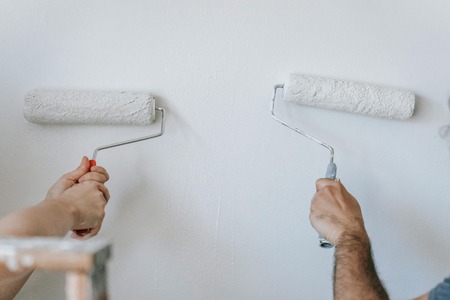
Marketing a house that needs repairs requires a strategic approach to attract the right buyers and highlight the property’s potential. Here are some effective ways to market a home that needs repairs:
1. Highlight the Potential
Focus on the home’s potential rather than its current state. Emphasize features such as the location, size of the lot, architectural style, or unique design elements that could make the house a great investment. Use phrases like “great opportunity for customization” or “bring your vision to life” to appeal to buyers looking for a project.
2. Target the Right Buyers
Identify your target market, such as real estate investors, house flippers, DIY enthusiasts, or bargain hunters. These groups are more likely to be interested in homes that need repairs. Tailor your marketing message to their interests by focusing on the potential for renovation and future profit or personalization.
3. Be Honest and Transparent
While it’s nice to share on the positives, bring the buyer’s attention to the repairs that are needed. Buyers appreciate honesty, and will be more inclined to consider your property if they know exactly what they are getting into. Be sure to spell it out clearly if you plan to sell the home “as-is,” and include any known issues: roof damage, plumbing problems, etc. Transparency builds trust and helps avoid any last-minute deal breakers.
4. Use Professional Photos
Even if the house needs repairs, professional photos can help showcase the property in the best light. Emphasize the positive characteristics that may be spacious rooms-unique architectural elements-a large backyard. Whether purposely downplay or leave out common spaces that are in clear ruin, be upfront about the general state of the house.
5. Leverage Virtual Tours or Floor Plans
Using virtual tours, floor plans, or 3D renderings can help buyers envision the home after repairs if there are many repairs to be made. This may appeal to buyers who wish to customize the spaces, or who may struggle to look past the current condition of the home.
Bottom Line
There is a good practice when marketing and selling a home that is in need of repairs, and that is emphasizing the house’s potential for investors, bargain hunters, or remodelers, but at the same time, disclosing what is wrong with it. Set a competitive pricing for the home, highlight unique selling points, and make sure to target the right kind of buyers: investors, bargain hunters, and remodelers. Estimates of repair costs or repair credits can also help in making the sale attractive. Above all, the bottom line is that the home should sell as a valuable opportunity for the right buyer willing to invest in its future.



